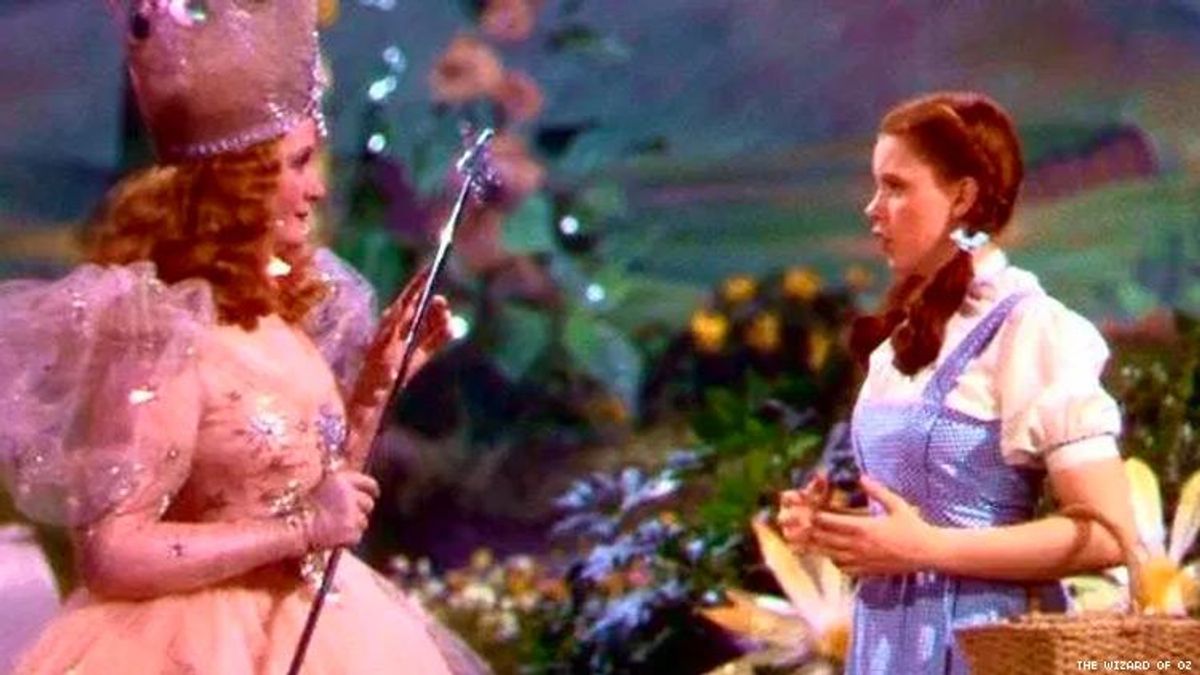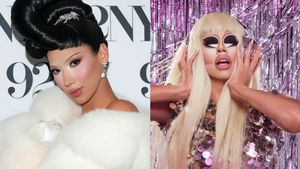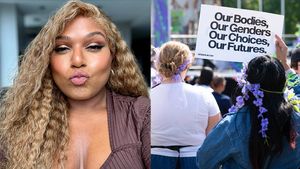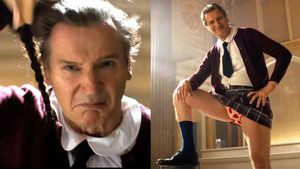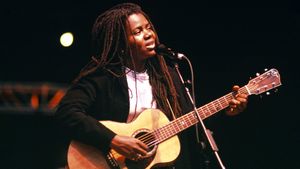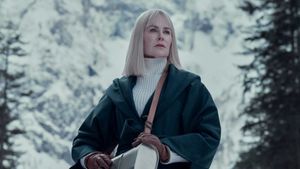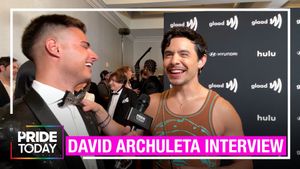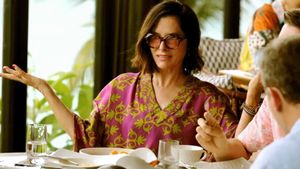Glinda emerged from a rainbow bubble and asked Dorothy, "Are you a good witch or a bad witch?" Dorothy had just stepped from the wreckage of her black-and-white home into a world of overwhelming Technicolor. She needed a moment. Life wasn't clear-cut B&W as it was in Kansas. In Oz, a place distractedly saturated and vivid with hues unimagined, poor Dorothy didn't have a clue what the hell just happened. She could only respond, "Who, me? I'm not a witch at all! I'm Dorothy Gale from Kansas."
A lot of us can relate. For decades Oz particularly resonated with the LGBT community. Oz was a touchstone to generations of enchanted folk and still holds meaning. This old, brilliant film is a metaphor for then and now.
Once upon a time there was limited television and no internet. When I was a child, my semi-rural family had three stations to surf, and the annual presentation of The Wizard of Oz was highly anticipated. When I look back, I realize the friends who were equally jazzed about Oz were probably gay too. Something about Oz tickled the queer chromosome to dominance and many followed the good advice "Come out, come out, wherever you are."
Be it friend of Dorothy Parker or Dorothy Gale, "Are you a friend of Dorothy?" was code for several generations of gay men. The Stonewall riots occurred the night after Judy Garland's funeral, a slice of ironic coincidence, but regardless, Dorothy was our friend and a rainbow became our flag and now, all these years later, I still appreciate Dorothy and Glinda. Theirs was a humbler understanding of good and evil, black and white. Glinda simply wanted to know and Dorothy didn't understand the question.
Today I equate Dorothy's Technicolor daze to what many of us experience with thousands of televised choices and a billion websites. Personally, sometimes I miss the black-and-white simplicity of three networks, and I wonder if the endless landscape of 21st-century media makes it difficult to distinguish a good witch from bad.
Twenty-first-century America is no Oz. We find ourselves in a place that L. Frank Baum or any other writer, no matter how imaginative, could not have foreseen. That's not to say we don't have flying monkeys, though there's a stronger semblance to zombies, demons we hoped were long buried. Racists, nationalists, white supremacists, and anti-Semetic sociopaths still stumble and mutter and seek to eat our brains. We thought they were long gone or at least diminished, and one can only imagine the true motives of the man behind the curtain. And it's hard to filter the yellow brick road through the white noise of endless entertainment and social media.
Did we come to this place because of something akin to Technicolor? Were we driven to our particular black or white tribes because we needed a break from all that color and all those choices? Is the reality that a billion websites are 999.75 million too many options for any one human being? Is there such a thing as too much of a good thing, and did the First Amendment on steroids drive us to either choose and divide or lose our sanity?
Once upon a time we picked our tribes from the people we knew. Our family was our virtual tribe, and our friends and neighbors tribe by default. They helped form choices and opinions. Life was black or white to most, and though lots of dark choices were made, those decisions were seldom based on the advice of faceless strangers. One could ignore opinions, move to a city, read a book, or simply walk away. That's not so easy now in a place defined by an inescapable Technicolor internet.
These new tools are a wonderful gift but a gift with conditions. The instructions and assembly can be incomprehensible, and ironically, despite all the connections, each and every one of us is on our own. Maybe a cowardly lion or brainy tin man or empathetic scarecrow will help us find our way, but I wouldn't count on it. We're solo on our trek home, but we can take some solace in the pure and simple truth that we are actually on the yellow brick road after all. It's just easy to get lost because of unexpected twists and turns, speed bumps and misleading signage.
Still, all we have to do is move forward, have faith, and click our ruby slippers once we arrive at the voting booth. Maybe we'll wake up from a bizarre dream, surrounded by loved ones and go on with our lives.
I don't think the flying monkeys believed they were bad. I think they were simply the Wicked Witch of the West's base. I wonder what they did after she liquefied. I hope they embraced the other colors in the Technicolor world of Oz and moved on to a happier and more productive existence. Some will search websites and YouTube tutorials on the proper way to grow poison poppies, but hopefully, most will tire of the Sisyphean task of maintaining so much anger. Fear and hate are enormous burdens for a flying monkey. It's much easier to soar without ballast. Some of the enchanted have known that all along.
KURT NIECE is an artist, jeweler, and author of The Breath of Rapture and Mercury Fields. He and his partner, Gary, live with their beloved feline in the crystal valleys of Hot Springs Village, Ark.
